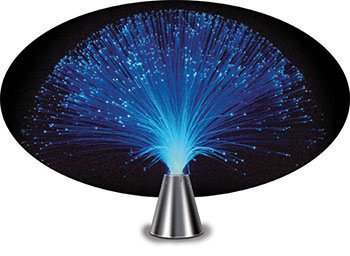const int led1 = 3;
const int led2 = 5;
const int led3 = 6;
const int led4 = 9;
const int led5 = 10;
int fadeAmount1 = 1;
int fadeAmount2 = 1;
int fadeAmount3 = 1;
int fadeAmount4 = 1;
int fadeAmount5 = 1;
int brightness1 = 0;
int brightness2 = 51;
int brightness3 = 102;
int brightness4 = 153;
int brightness5 = 0;
void setup() {
Serial.begin(9600);
}
void loop() {
analogWrite(led1, brightness1);
analogWrite(led2, brightness2);
analogWrite(led3, brightness3);
analogWrite(led4, brightness4);
analogWrite(led5, brightness5);
// change the brightness for next time through the loop:
brightness1 = brightness1 + fadeAmount1;
brightness2 = brightness2 + fadeAmount2;
brightness3 = brightness3 + fadeAmount3;
brightness4 = brightness4 + fadeAmount4;
brightness5 = brightness5 + fadeAmount5;
// reverse the direction of the fading at the ends of the fade:
if (brightness1 == 0 || brightness1 == 255) {
fadeAmount1 = -fadeAmount1 ;
}
if (brightness2 == 0 || brightness2 == 255) {
fadeAmount2 = -fadeAmount2;
}
if (brightness3 == 0 || brightness3 == 255) {
fadeAmount3 = -fadeAmount3;
}
if (brightness4 == 0 || brightness4 == 255) {
fadeAmount4 = -fadeAmount4 ;
}
if (brightness5 == 0 || brightness5 == 255) {
fadeAmount5 = -fadeAmount5;
}
// wait for 30 milliseconds to see the dimming effect
//delay(30);
Serial.println(brightness1);
}
The problem is that when I tried to add this to the code I previously had with the servos and the range sensor in it, it freaked out and did this:
#include <Servo.h>
Servo grass;
Servo flower;
const int led1 = 3;
const int led2 = 5;
const int led3 = 6;
const int led4 = 9;
const int led5 = 10;
int fadeAmount1 = 1;
int fadeAmount2 = 1;
int fadeAmount3 = 1;
int fadeAmount4 = 1;
int fadeAmount5 = 1;
int brightness1 = 0;
int brightness2 = 51;
int brightness3 = 102;
int brightness4 = 153;
int brightness5 = 0;
#include <Ultrasonic.h>
#define TRIGGER_PIN 12
#define ECHO_PIN 13
Ultrasonic ultrasonic(TRIGGER_PIN, ECHO_PIN);
void setup() {
Serial.begin(9600);
grass.attach(14);//pins 9 and 10 don't work with servos
flower.attach(2);
}
void loop() {
grass.write(92);
flower.write(179);
/*
float cmMsec, inMsec;
long microsec = ultrasonic.timing();
cmMsec = ultrasonic.convert(microsec, Ultrasonic::CM);
inMsec = ultrasonic.convert(microsec, Ultrasonic::IN);
Serial.print("MS: ");
Serial.print(microsec);
Serial.print(", CM: ");
Serial.print(cmMsec);
Serial.print(", IN: ");
Serial.println(inMsec);
//delay(1000);
*/
analogWrite(led1, brightness1);
analogWrite(led2, brightness2);
analogWrite(led3, brightness3);
analogWrite(led4, brightness4);
analogWrite(led5, brightness5);
// change the brightness for next time through the loop:
brightness1 = brightness1 + fadeAmount1;
brightness2 = brightness2 + fadeAmount2;
brightness3 = brightness3 + fadeAmount3;
brightness4 = brightness4 + fadeAmount4;
brightness5 = brightness5 + fadeAmount5;
// reverse the direction of the fading at the ends of the fade:
if (brightness1 == 0 || brightness1 == 255) {
fadeAmount1 = -fadeAmount1 ;
}
if (brightness2 == 0 || brightness2 == 255) {
fadeAmount2 = -fadeAmount2;
}
if (brightness3 == 0 || brightness3 == 255) {
fadeAmount3 = -fadeAmount3;
}
if (brightness4 == 0 || brightness4 == 255) {
fadeAmount4 = -fadeAmount4 ;
}
if (brightness5 == 0 || brightness5 == 255) {
fadeAmount5 = -fadeAmount5;
}
}
I had the range finder code commented out because I thought it might be causing issues, but that didn't seem to help at all.




.jpg)
